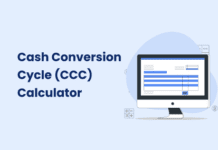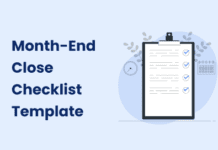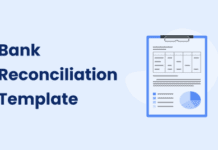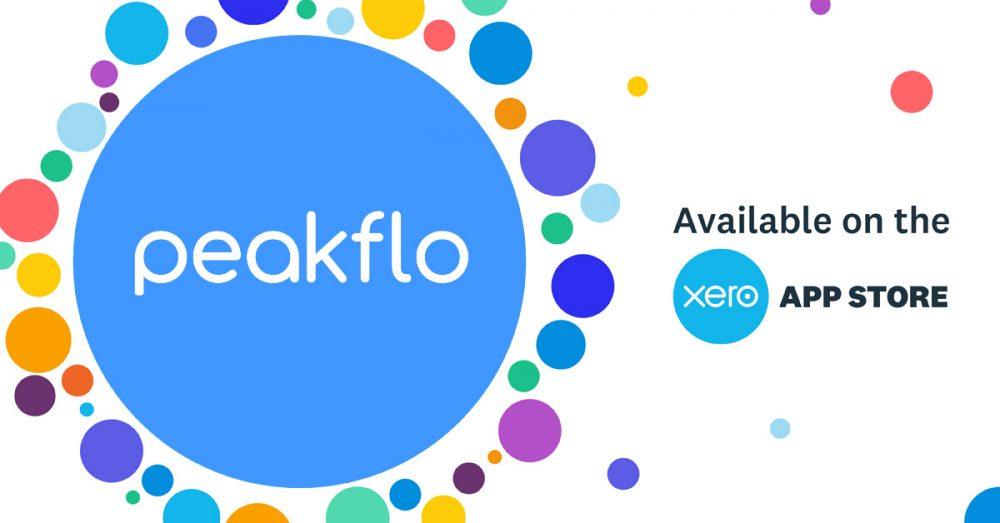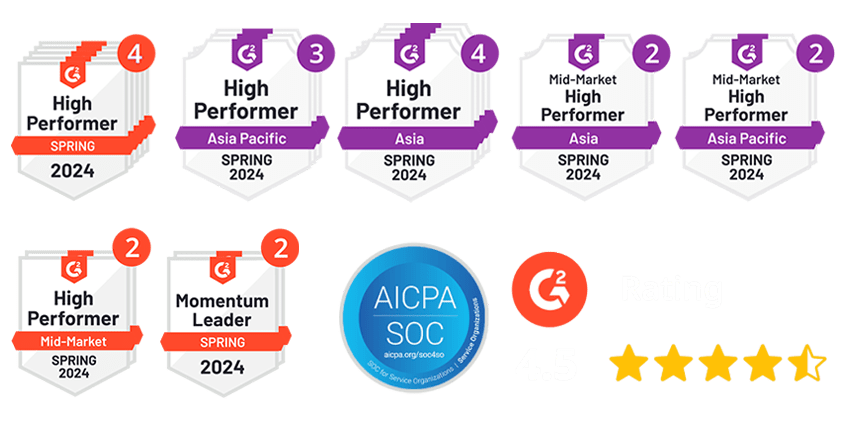Cash flow is what keeps every hospital running. Without it, hospitals can not pay their staff, buy necessary equipment, or keep daily operations going. Managing accounts receivable is the key to making sure payments arrive on time. When done correctly, it can simplify billing, cut down on claim denials, and increase revenue.
This guide is for hospital billing teams, finance staff, and managers in Singapore. It is especially useful for those dealing with patient payments, insurance claims, or delays in approvals. You will find clear tips on how to collect payments faster and avoid common problems.
Good accounts receivable management is about more than just keeping the hospital financially stable. It is about making sure resources are available where they are needed most. By using these strategies, you can improve cash flow, ease the workload for your staff, and ensure patients get the best care possible.
Understanding Accounts Receivable in Healthcare
Accounts receivable in healthcare are the money hospitals are waiting to receive for services they have already provided. This money can come from patients, insurance companies, or government programs like Medicare and Medicaid. It is not paid immediately, so hospitals must keep track of what they are owed.
Unlike other industries, healthcare billing can be complicated. Hospitals face unique challenges, including:
- Insurance and Billing Cycles: Insurance companies often have long approval processes. Claims must include the correct codes and detailed paperwork to get paid.
- Regulatory Compliance: Hospitals must meet strict legal requirements when billing to avoid denied claims.
- Patient Payment Plans: Many patients can not pay their bills upfront, so hospitals offer payment plans, which further delay payments.
Why Managing Accounts Receivable Matters?
Managing accounts receivable is crucial for hospitals. It is not just about tracking uncollectable accounts—it is about keeping the hospital running. Here is why it is so important:
- Preserving Financial Health: If hospitals do not manage their receivables well, unpaid bills pile up. This creates problems because hospitals need steady cash to pay staff, buy medical supplies, and cover other expenses.
- Enhancing Operational Efficiency: Unpaid bills slow down hospital workflows. Staff spend too much time following up on payments instead of focusing on helping patients.
- Ensuring Cash Flow: Hospitals need cash to invest in critical areas like new equipment or hiring more doctors. When payments are delayed, they lose the flexibility to make these important investments.
- Reducing Risks of Bad Debt: The longer a bill stays unpaid, the harder it is to collect. Some payments eventually have to be written off as bad debt. Good management helps hospitals recover more of what they are owed.
Challenges in Managing Hospital Accounts Receivable
Handling accounts receivable in hospitals is not easy. It involves dealing with complex systems, strict timelines, and delayed payments. Without the right strategies, these challenges can harm cash flow and slow down hospital operations.
- Common Issues Leading to Denied Claims
Denied claims are a major problem for hospitals. They slow down cash flow and create extra work for staff. Some common reasons for claim denials include:
- Mistakes in Patient or Insurance Information: Small errors, like misspelled names or wrong policy numbers, often lead to rejected claims.
- Missed Deadlines: Insurance companies have strict rules about when claims must be submitted. Late submissions are often denied.
- Errors in Billing Codes: Billing codes need to be accurate and complete. Even small mistakes in coding can delay or reject a claim.
To avoid these problems, hospitals should double-check details and ensure staff is properly trained. Using software to automate billing checks can also reduce errors.
- Complex Billing Protocols
Billing in healthcare is complicated because each insurance company has its own set of rules. This makes it harder for hospitals to process claims quickly.
- Different Rules for Each Insurance Provider: Each insurer has unique guidelines for approving claims. What works for one provider may not work for another.
- Extra Work for Staff: Hospital staff spends hours understanding and following these rules, leaving them with less time for other important tasks.
Hospitals can manage these issues by using standardized billing systems. Automated tools can also help staff handle diverse insurance requirements more efficiently.
- Increased Patient Financial Responsibility
Patients are paying more of their medical bills than ever before. High-deductible health plans and larger co-payments mean hospitals need to collect more money directly from patients.
- Delayed Payments: Many patients are not ready to pay high bills upfront. This leads to delays or unpaid balances.
- Confusion About Costs: Patients often do not fully understand what they owe, which causes frustration and hesitation to pay.
Hospitals can address this by providing clear billing information and offering payment plans. Explaining costs to patients early can also improve payment rates.
- Aging Receivables
“Aging receivables” are unpaid bills that are overdue by more than 90 days. These delayed payments are a serious problem for hospitals.
- Cash Flow Problems: When payments are late, hospitals struggle to pay their expenses, like staff salaries and supplies.
- Risk of Losing Money: The longer a bill goes unpaid, the less likely the hospital is to collect it. These unpaid amounts often turn into bad debt.
To fix this, hospitals should first focus on following up with older accounts. Automated reminders and flexible payment options can also help patients pay on time.
Key Metrics for Hospital Accounts Receivable Management
Tracking the right numbers is crucial for improving how hospitals collect payments. These metrics can show where problems exist and help you fix them. Let us break down the key metrics every hospital should monitor.
- Days in Accounts Receivable (DAR)
What It Measures: DAR shows how long, on average, it takes for a hospital to get paid after providing care.
Why It Matters: A lower DAR means faster payments, which keeps cash flow healthy and reduces financial stress.
| Formula:Days in Accounts Receivable (DAR) = Total Receivables ÷ Daily Revenue |
Example: If a hospital has $3,000,000 in accounts receivable and earns $100,000 per day in patient revenue:
DAR = $3,000,000 ÷ $100,000 = 30 days
This means the hospital takes 30 days, on average, to collect payments.
- Percentage of Receivables Over 90 Days
What It Measures: This shows how much of the hospital’s accounts receivable is unpaid for more than 90 days.
Why It Matters: A high percentage may mean issues like delays in billing, errors in claims, or poor follow-up processes.
| Formula:Percentage Over 90 Days = (Receivables Over 90 Days ÷ Total Receivables) × 100 |
Example: If $500,000 of the hospital’s $2,000,000 receivables is over 90 days old:
Percentage Over 90 Days = ($500,000 ÷ $2,000,000) × 100 = 25%
This means 25% of the hospital’s payments are overdue by more than 90 days.
- Denial Rates and Write-Off Percentages
What They Measure:
- Denial Rate: The percentage of claims rejected by insurance companies or payers.
- Write-Off Percentage: The share of unpaid receivables that the hospital has decided it can not collect.
Why They Matter: High denial rates suggest billing errors or claim inaccuracies. High write-offs mean the hospital is losing money it could have collected.
| Denial Rate Formula:Denial Rate = (Denied Claims ÷ Submitted Claims) × 100 |
Example: If 200 out of 2,000 claims are denied:
Denial Rate = (200 ÷ 2,000) × 100 = 10%
| Write-Off Percentage Formula:Write-Off Percentage = (Write-Offs ÷ Total Receivables) × 100 |
Example: If $50,000 is written off from $1,000,000 in accounts receivable:
Write-Off Percentage = ($50,000 ÷ $1,000,000) × 100 = 5%
These metrics show where the hospital might be losing money and how to improve payment collection.
- Collection Effectiveness Index (CEI)
What It Measures: CEI shows how efficient the hospital is at collecting payments during a specific period.
Why It Matters: A higher CEI means the hospital is doing a good job collecting what it’s owed.
| Formula:Collection Effectiveness Index (CEI) = (Payments Received ÷ (Payments Received + Ending Receivables)) × 100 |
Example: If a hospital collects $900,000 and has $100,000 in ending accounts receivable:
CEI = ($900,000 ÷ ($900,000 + $100,000)) × 100 = 90%
This means the hospital collected 90% of what it could have during the period.
Simple Strategies to Improve Hospital Payments and Prevent Claim Issues
Managing hospital payments and fixing denied claims doesn’t have to be complicated. Clear communication, better processes, and smart tools can make a big difference. These steps help hospitals collect money faster, avoid mistakes, and keep patients happy.
- Talk Clearly About Costs
Patients are more likely to pay when they understand what they owe. Clear, simple communication makes billing easier for everyone.
- Explain Costs Early: Let patients know what their treatment will cost before it starts. Break down insurance coverage, co-pays, and any extra costs they’ll need to pay.
- Use Easy Words: Avoid confusing terms in bills. Show costs in simple, clear sections so patients can see exactly what they’re paying for.
- Offer Support: Provide resources like FAQs or helplines to answer questions about bills or insurance.
- Remind Patients About Payments
Following up on unpaid bills helps keep payments on track. Gentle reminders can make a big difference.
- Send Friendly Messages: Use email, texts, or calls to remind patients about due payments. Start with polite reminders and adjust the tone if bills stay unpaid.
- Space Out Reminders: Don’t send reminders too often. Give patients time to pay without making them feel pressured.
- Track Reactions: Keep notes on how patients respond to reminders. Use this information to improve your approach.
- Make Payments Simple
The easier it is to pay, the more likely patients will settle their bills.
- Train Your Team: Teach front-desk staff how to talk about payments confidently. They should know how to explain co-pays, overdue bills, and prepayments.
- Offer Multiple Options: Allow payments by credit card, mobile apps, or online portals. Make it convenient for patients to pay right away.
- Give Small Discounts: Offer discounts for paying early. Even small savings can encourage patients to pay faster.
- Bill More Often
Sending bills frequently helps patients stay on top of their payments.
- Send Monthly Statements: Don’t wait too long to send bills. A monthly statement reminds patients of what they owe.
- Use Digital Billing: Email bills or share invoices through patient portals. Digital bills are faster and more challenging to lose.
- Check Insurance Payments Quickly: Follow up with insurance companies to make sure they pay on time. Fix any issues right away.
- Fix Problems with Denied Claims
When claims are denied, hospitals lose money. Preventing and fixing these problems keeps the cash flow steady.
- Find the Root Cause: Figure out why claims are denied. Common reasons include missing information or coding errors. Fix these problems to avoid them in the future.
- Create Appeal Steps: Have a clear process for handling denied claims. Act quickly to fix issues, as waiting too long can make recovery harder.
- Track What Works: Measure how many appeals are successful. Use this data to improve your process.
- Train Staff to Avoid Errors
Accurate billing and coding are critical for avoiding claim problems.
- Keep Training Updated: Insurance rules change often. Regular training helps staff stay current.
- Practice Real Scenarios: Use real-life examples to teach staff how to handle tricky billing situations.
- Use Smart Tools: Software that checks codes and flags mistakes can save time and reduce errors.
Utilizing Technology for Accounts Receivable Optimization
Technology makes managing hospital accounts receivable easier and more effective. It helps reduce errors, saves time, and improves efficiency. Hospitals using advanced tools can speed up billing, track payments more accurately, and free staff from repetitive tasks.
- Automated AR Tracking and Reporting Systems
Automated systems make it simple to manage accounts receivable. They give real-time updates and quickly point out problem areas.
- Fix Errors Quickly: Automated tools flag mistakes in claims or payments right away so staff can correct them before they cause delays.
- Focus on What is Important: These systems highlight overdue payments and keep payments on track. Staff know where to focus their efforts.
- Identify Patterns: Detailed reports show trends, such as frequent payment delays or claim denials. This helps hospitals find and fix the root causes.
- Workflow Automation
Automation helps hospitals handle routine tasks faster and more accurately. It ensures critical steps are completed on time and without errors.
- Faster Claims: Automated systems prepare and submit claims quickly, reducing wait times for payments.
- Meet Payer Rules: These tools check claims for accuracy before submission to reduce the risk of denials.
- Stay on Top of Follow-Ups: Automated reminders keep staff on track with overdue payments, helping to recover funds faster.
- Electronic Invoicing
Digital invoicing or E-invoicing makes the billing process faster, more accurate, and easier to track.
- Immediate Delivery: Digital invoices are sent instantly, avoiding delays from traditional mail.
- Monitor Payment Progress: Electronic systems show when invoices are sent, opened, or paid. Staff can follow up at the right time with clear information.
Peakflo: Simplifying Accounts Receivable for Healthcare Providers
Peakflo’s advanced platform helps hospitals manage accounts receivable more effectively. It reduces errors, speeds up payments, and improves overall cash flow. With easy-to-use tools, hospitals can save time and focus more on patient care.
Accurate Proforma Invoice Validation
Proforma invoices need to be accurate before claims are submitted. Peakflo’s system ensures every detail is correct.
- Customizable Invoices: Create invoices with branded templates and adjustable line items, discounts, and tax rates.
- Quick Review: Payers can use a simple portal to review and validate invoices quickly.
- Manage Disputes: Handle disputes easily with options to include reasons and track resolutions.
- Centralized Communication: Keep all conversations and updates in one place for better tracking.
- Instant Approvals: Payers can approve invoices with one click, saving time and avoiding delays.
Efficient E-Invoicing for Healthcare
Peakflo transforms billing by making it faster and more reliable.
- Quick Invoice Creation: Generate professional tax invoices and recurring bills in seconds.
- Approval Workflows: Use multi-level approval steps to reduce errors and ensure accuracy in invoicing.
- Digital Signatures: Add validated signatures in invoices to meet compliance rules.
- Flexible Billing Rules: Handle complex healthcare billing with dynamic invoicing options.
- Recurring Billing Made Simple: Manage regular services or treatments with automated recurring invoices.
- QR Code Integration: Add QR codes for quick validation and easier tracking.
Centralized Finance CRM for Better Coordination
Peakflo’s Finance CRM acts as a hub for managing patient and payer interactions. It helps departments work together more efficiently.
- Role-Based Access: Control who can view or edit data for added security and better organization.
- Complete Communication Records: Keep all communication with patients or insurers in one location.
- Real-Time Collaboration: Coordinate between billing, collections, and clinical teams instantly.
- Automated Workflows: Use workflows to manage disputes and escalations with less manual effort.
- Task Assignments: Assign specific tasks to team members for better accountability.
- Built-In Calling: Make direct calls within the platform using VoIP integration for faster resolutions.
Smart Payment Reminders
Peakflo’s automated reminders make collections easier and improve payment rates.
- Group Payers: Segment payers based on their behavior or payment size to target them better.
- Tailored Strategies: Customize reminder approaches for different groups to improve response rates.
- Multi-Channel Notifications: Send reminders via email, SMS, WhatsApp, or other platforms.
- Automatic Escalations: Escalate overdue payments based on preset rules.
- Effectiveness Tracking: Monitor how well reminders are working and adjust strategies as needed.
- Attach Payment Details: Include all necessary payment information in reminders to reduce back-and-forth communication.
Secure Customer Portal
Peakflo provides a dedicated portal for customers, including patients and insurers. This makes billing more transparent and easier to manage.
- 24/7 Access: Payers can view billing details and payment history anytime.
- Generate Statements: Let users create and download billing statements securely.
- Submit Disputes: Payers can raise disputes directly through the portal for faster resolution.
- Upload Payment Proof: Simplify the process of confirming payments.
- Multi-Currency Support: Accept payments in different currencies to accommodate global payers.
- Manage Partial Payments: Handle withholding taxes and partial payments efficiently.
AI-Driven Financial Analytics
Peakflo’s advanced analytics tools help hospitals understand their financial performance and make better decisions.
- Monitor Key Metrics: Track Days Sales Outstanding (DSO), aging balances, and other important data.
- Predict Payment Trends: Use AI to forecast payment behaviors and identify risky accounts.
- Track Dispute Resolutions: Monitor the status of disputed invoices to ensure timely action.
- Real-Time Cash Flow Reports: Generate up-to-date cash flow forecasts to plan for expenses.
- Team Performance Insights: Analyze how well team members are collecting payments.
- Receive Alerts: Get AI-driven notifications about accounts that need attention.
Automated Cash Application
Reconciliation is faster and more accurate with Peakflo’s automated cash application.
- Bank Feed Integration: Automatically import transaction data from multiple bank accounts.
- Extract Details Automatically: Pull remittance details from various formats without manual effort.
- Intelligent Matching: Match payments with invoices and remittance data for better accuracy.
- Handle Partial Payments: Reconcile partial payments easily using smart matching algorithms.
- Automate Adjustments: Apply discounts, taxes, or corrections automatically when reconciling.
- Customer Self-Service: Allow customers to match their payments through a self-service portal.
- Post to Accounting Software: Sync reconciled payments directly with accounting systems or ERP tools.
Conclusion
Managing a hospital’s accounts receivable is about more than just handling payments. It is a critical part of keeping operations stable and ensuring patients get the care they need. Strong systems make sure your hospital has the money it needs, while also reducing delays and preventing lost revenue.
Peakflo makes managing hospital accounts receivable easier and more effective. It automates key steps like billing and payment reconciliation, so your staff spends less time on paperwork and more time on meaningful tasks. This leads to faster payments, fewer errors, and better cash flow.
With Peakflo’s accounts receivable solution, you can stop worrying about payment issues and focus on improving patient care. It is time to take control of your hospital’s finances and make operations run smoothly.
Book a demo today to see how Peakflo can transform your financial management and set your hospital up for long-term success.









![Why AI Sales Calls Are Making Good Sales Reps Even Better [2025 Guide] ai sales calls](https://cdn-kmjmp.nitrocdn.com/YvtqmrsiHUxqerlSiZgbfzqqTARWTElr/assets/images/optimized/rev-834053b/blog.peakflo.co/wp-content/uploads/2025/09/65168cf6-3001-4733-8cbc-12d5684cf449-218x150.webp)










